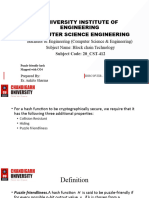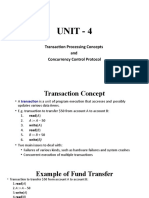0% found this document useful (0 votes)
98 views22 pagesLecture 04-Hash Pointers and Data Structures
Uploaded by
Hira QayyumCopyright
© © All Rights Reserved
We take content rights seriously. If you suspect this is your content, claim it here.
Available Formats
Download as PPTX, PDF, TXT or read online on Scribd
0% found this document useful (0 votes)
98 views22 pagesLecture 04-Hash Pointers and Data Structures
Uploaded by
Hira QayyumCopyright
© © All Rights Reserved
We take content rights seriously. If you suspect this is your content, claim it here.
Available Formats
Download as PPTX, PDF, TXT or read online on Scribd
/ 22

























































































